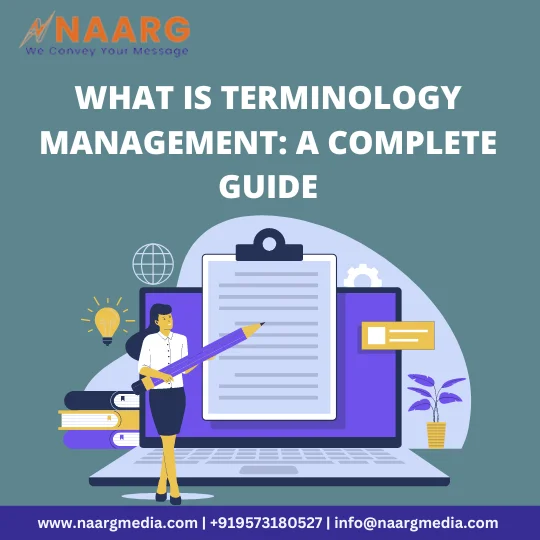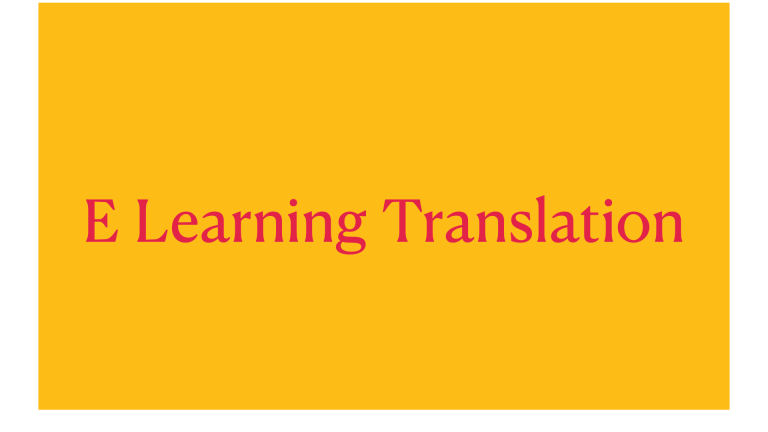Have you ever been in a situation where you are reading a document and, halfway through, you encounter a term that you are not able to understand or is used differently? That can be confusing, right? This is where terminology management comes into play and highlights the importance of terminology management.
As a content creator, business professional, or professional translator, the one thing that you want is consistency in your message, as it can easily make or break your success. Terminology management plays a crucial role in ensuring that your message is received perfectly.
But the question here is: What is terminology management? It is a powerful yet often overlooked tool that ensures your words resonate perfectly with your target audience. When it comes to terminology management, it is not specifically used for large corporations; freelancers, small businesses, or anyone who values coherent and clear communication can benefit from terminology management.
It can be considered a personal dictionary that reflects your unique brand voice and different industry standards. This personalized dictionary of yours helps you avoid misunderstandings and enhances the quality of translations. You are ultimately speeding up your content creation process and maintaining consistency.
This blog is dedicated to helping you understand what terminology management is, its benefits, importance, and key components. And most importantly, what are the best practices for terminology management?
So, let’s get started.

What is Terminology Management?
It involves defining, identifying, and managing your company’s or project’s key terms that need consistent translation. All these terms can range from industry-specific jargon to personal preferences. Once you manage terminology, you can ensure consistent and correct use of every term across all translations, maintaining content integrity and quality.
Always start by creating a multilingual glossary with your preferred translations. The purpose of this glossary is to serve as a handy reference to maintain consistency and accuracy in translations. The glossary includes a list of terms in one language and their preferred translations in another, ensuring that the same term always receives the same translation.
Building on this, you can create a termbase, or terminology database, which offers a more comprehensive solution. Termbase lists every single word, phrase, or expression, thus providing a source term with its corresponding target term in the target language.
Importance of Terminology Management
Did you know that a 2024 report showcased that 82% of organizations are actively investing in technology to support terminology management? And the sole focus is on improving consistency and translation accuracy. Nowadays, a significant portion of documents are crafted using specialized languages, most of which involve specific terminology.
Terminology management is essential for thoroughly understanding specific topics and facilitating clear communication across different industries. So, well-defined terminology reduces ambiguity and increases clarity, making it a crucial factor in ensuring quality.
Effectively communicating specialized information and knowledge, whether it is in a single language or multiple languages, relies on the development and dissemination of terminological resources and efficient terminology management. This terminology management and terminology database is an integral part of the translation and localization process.
Professional translators rely on terminology to make their translations precise and consistent. Overall, consistent and up-to-date terminology enhances communication, improves efficiency, and helps avoid cultural and linguistic misunderstandings.
Benefits of Terminology Management
Having a solid terminology management system surely has some clear benefits for your translation and localization projects. It is not just a tool but a strategic asset in the translation and localization process. Listed below are some of the key benefits of terminology management.
1. Ensuring Accuracy
A well-maintained terminology database serves as a dependable reference for translators, enabling professional translators to use preferred terminology and improve overall translation quality while minimizing errors.
2. Enhancing Consistency
The terminology database ensures uniformity in terminology, aligning with client preferences across multiple projects and various platforms. Consistency is vital for maintaining a coherent brand identity and messaging.
3. Streamlining the Translation and Localization Processes
An effective terminology management database reduces the need for revisions and rework due to various inconsistencies, saving a considerable amount of time and effort for professional translators and editors.
4. Improving Communication Across Departments
Consistent terminology enhances communication between different departments within a company, like marketing, finance, production, and legal. The clarity helps you prevent misunderstandings and improve overall efficiency.
5. Facilitating Multilingual Communication
Terminology management always supports the accurate translation of specialized terms, ensuring that multilingual communications are clear and precise.
All in all, terminology management helps with the overall consistency, efficiency, and accuracy of translation and localization projects.
Key Components of Terminology Management
1. Term Identification
One of the key components of terminology management is identifying key terms and concepts that are central to your business or organization. This is the first step in terminology management. It can include industry-specific jargon, technical terms, or even company-specific terminology that needs to be standardized.
2. Definition and Context
Once you have identified the terms, defining each term accurately is crucial. Also, providing context, like usage examples or notes, helps to ensure that everyone can understand the precise meaning and application of the term.
3. Multilingual Glossaries
Having a multilingual glossary ensures that all key terms have consistent translations across multiple languages. It involves listing terms in the source language along with their preferred translations and definitions in the target language.
4. Term Bases
It is a comprehensive database that includes single words, expressions, and phrases with their corresponding translations and additional information. It might include images, notes, definitions, and context to ensure precise usage.
5. Centralized Storage
Always maintaining a centralized, easily accessible system for storing your terminology database is essential. It could be a specialized software tool or an online platform that allows for easy updates and retrieval.
6. Regular Updates and Reviews
A terminology database should always be a living resource that evolves with your business. Regular updating and reviewing of the terms ensures they remain relevant and accurate. And adapting to changes in industry standards or company practices.
7. Integration with Tools
Integration of your terminology database with content creation, translation, and localization tools enhances efficiency. The integration allows for real-time access to the terms, ensuring consistency across all communications.
8. Quality Assurance
Quality assurance processes ensure that the terminology is used correctly and consistently. And regular checks and audits help maintain high-quality standards and catch any inconsistencies or errors.
Best Practices in Terminology Management
1. Engage Stakeholders Early
For the best practices in terminology management, one practice is most essential, and that is to involve key stakeholders like subject matter experts, professional translators, content creators, and even departmental representatives. It is essential to have them on board, as their input ensures that the terminology reflects the accurate and practical language used within the organization.
2. Integrate with Content Creation and Translation Tools
Make sure to integrate your terminology database with content creation, translation, and localization tools. This allows for real-time access to approved terms, ensuring consistency and accuracy in all communications.
3. Train and Educate Your Users
Always provide comprehensive training and documentation for all users of the terminology database. Ensure that everyone understands how to access and use the resources effectively, and emphasize the importance of consistent terminology usage.
4. Foster a Terminology Culture
Try to promote a culture of terminology awareness within your organization. And highlight the benefits of proper terminology management, like improved communication, reduced errors, and enhanced brand identity.
5. Monitor Industry Trends
Make sure to stay informed about industry trends and changes in terminology. And adjust your database accordingly to ensure that it remains current and aligns with all the industry standards.
Following these practices can help you establish and maintain an effective terminology management system that enhances communication, maintains consistency, and supports your organization’s overall goals.
We are Naarg, a global language services provider, supporting various businesses in reaching a global audience in any language.
Contact us today to learn more about our services.

